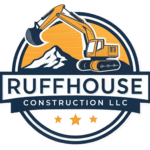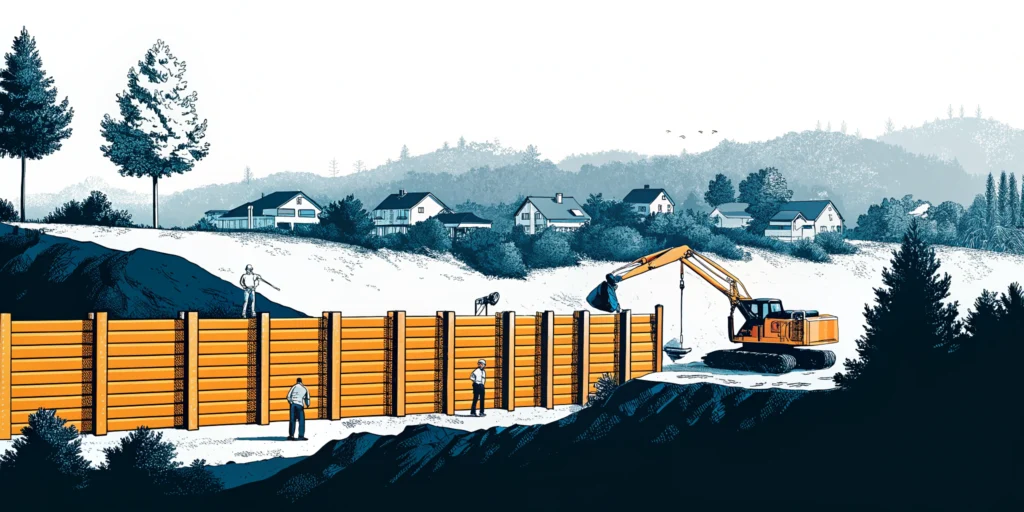When you’re planning deep excavations, reliable support keeps your team safe and on schedule. When you need excavation shoring solutions you can depend on, you’re looking for methods that balance strength, speed, and compliance. Installing soldier piles with timber lagging panels offers a cost-effective, flexible system for shoring walls in narrow digs. I know how critical ground stability is for your project timeline and budget.
Design your soldier pile wall
Assess soil and loads
Soil properties shape your shoring design, so start with a site investigation. You’ll examine cohesion, permeability, and angle of repose to set safe load limits. Use data on subsurface conditions to size piles and spacing accurately, and refer to excavation shoring load capacity for guidance.
Select pile type
You can choose H-beams or I-beams based on expected loads and depth. Cantilever walls work for moderate depths, while anchored systems suit higher demands. For detailed planning, see soldier pile and lagging wall design and soldier pile retaining wall.
Plan lagging spacing
Proper panel spacing prevents soil movement and reduces deformation. Here’s how to plan it: position panels at intervals matching soil cohesion and surcharge loads. You can find layout standards in our guide on lagging panel design.
Choose lagging panel materials
Compare wood and steel options
Timber panels offer cost savings and fast installation, while steel provides long-term durability and thinner profiles. So you can match performance to budget, review material pros and cons in lagging panel material options.
Evaluate panel strength
Assess bending and shear capacity based on soil pressure and groundwater presence. Wood can swell in wet soils, so seal it or choose composite boards. Steel panels resist corrosion with coatings or galvanization—learn more in lagging panel wall reinforcement.
Install piles and panels
Drive soldier piles
Use cranes or vibratory hammers to set piles at marked locations. Keep piles plumb and maintain consistent spacing. You’ll rely on quality gear listed under excavation shoring equipment.
Insert lagging panels
As you excavate, slide panels between piles to shore the face. Work in lifts to maintain stability, and secure each panel before digging deeper. For step-by-step guidance, check installation of lagging panels and lagging panel installation process.
Add bracing or anchors
If your soil lacks arching capability, install ground anchors or internal struts. Anchors cut down deflection and lower project costs when feasible. Otherwise, use top-down slabs or struts for lateral support.
Comply with safety regulations
Meet OSHA requirements
Any trench deeper than 5 feet requires a protective system unless in stable rock, and depths over 20 feet must follow a professional engineer–designed plan.
| Excavation depth | Requirement |
|---|---|
| ≤ 5 ft stable rock | No shoring needed |
| > 5 ft | Protective system |
| > 20 ft | Engineered design |
Follow industry standards
You must align your shoring plan with excavation shoring standards and excavation shoring regulations. That’s why we reference best practices and local codes before putting plans on paper.
Train a competent person
OSHA defines this person as someone who can identify hazards and stop work if conditions get unsafe. Provide formal training in excavation shoring training and grant authority for daily safety checks.
Inspect and maintain systems
Set inspection schedule
Daily inspections help you catch issues before they escalate. Check after heavy rain, blasting, or any event that could shift soil. Follow excavation shoring safety guidelines and document each review.
- Daily visual check by competent person
- Post-rain or vibration assessment
- Weekly deep inspections for corrosion or damage
Address common issues
Water infiltration, soil bulging, and panel corrosion are frequent concerns. Tackle them with dewatering, backfill compaction, or corrosion-resistant coatings. Use excavation shoring quality control and excavation shoring risk assessment tools to stay ahead of trouble.
Why choose us
RuffHouse Construction LLC is the leading contractor in WA and OR for soldier pile and lagging installations
- In-house expertise in complex shoring designs
- Made in USA equipment for reliable performance
- OSHA-compliant processes to minimize safety risks
- Timely completion on budget and schedule
When you’re ready, our team is here to support your excavation shoring needs. Contact us today for a tailored solution.
Frequently asked questions
-
What is soldier pile and lagging panel shoring?
It’s a system using vertical soldier piles and horizontal panels to support excavation faces safely. -
How deep can soldier pile walls be used?
You can go up to around 30 feet with proper design, and deeper walls need anchored or engineered support. Learn about options in shoring systems for deep excavation. -
What materials work best for lagging panels?
Timber suits quick, low-cost digs, while steel offers high strength and longer service life. See lagging panel material options for details. -
How often should I inspect my shoring system?
You should inspect daily and after heavy rain or vibrations, with full reviews weekly to catch corrosion and shifts. -
What standards apply to excavation shoring?
You must follow OSHA 29 CFR 1926 Subpart P and any local building codes. For more, visit excavation shoring regulations.
Ready to start your own soldier pile wall project in Seattle, Tacoma, or anywhere in Puget Sound?
Learn how Ruffhouse Construction delivers safe, code-compliant soldier pile and lagging wall installations for any site.
See our Soldier Pile Installation Services for details and request a free estimate today.

